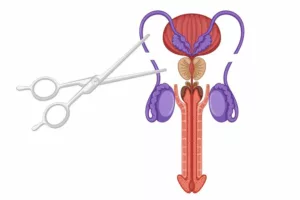Cervical myelopathy, resulting from spinal cord compression in the cervical region, can significantly impact an individual’s quality of life. The symptoms, such as pain, numbness, and restricted mobility, can be incapacitating, rendering basic daily tasks challenging. Double-Door Laminoplasty (DDL) presents a viable remedy for individuals grappling with this condition. This advanced spinal surgical technique aims to decompress the spinal cord, offering essential relief for individuals afflicted with multiple-level cervical spinal lesions.

DDL surgery, or Double-door Laminoplasty, is a posterior decompression technique that has emerged as a principal intervention for individuals with cervical myelopathy. Surgeons can expand the spinal canal and relieve pressure on the spinal cord by meticulously forming two “doors” in the laminae, the bony structure at the posterior aspect of the vertebrae. This technique, conceived in the late 1970s, has undergone substantial enhancement over the years, incorporating innovations such as artificial spacers and refined muscle-handling methods that augment its efficacy.
Key Information About DDL Surgery
| Attribute | Details |
|---|---|
| Procedure Name | Double-Door Laminoplasty (DDL) |
| Target Condition | Cervical Myelopathy, Spinal Cord Compression |
| Procedure Type | Posterior Decompression |
| Goal | Decompress the spinal cord and relieve pressure |
| Ideal Candidates | Patients with multiple-level cervical spinal stenosis or myelopathy |
| Benefits | Long-term relief, neurological function restoration |
| Innovations | Use of artificial spacers, muscle handling advancements |
| Recovery | Requires physical therapy and several weeks of recovery |
What Occurs During DDL Surgery?
DDL surgery addresses the fundamental cause of cervical myelopathy—spinal cord compression. The procedure is generally conducted under general anesthesia, with the surgeon executing a posterior incision at the nape of the neck. Subsequently, they meticulously excise segments of the laminae, the osseous structures constituting the posterior aspect of the vertebrae. These apertures, or “doors,” are engineered to expand the spinal canal, thereby increasing the capacity for the spinal cord and mitigating the pressure induced by osteophytes, hypertrophied ligaments, or other spinal complications.
This posterior approach is notably innovative as it circumvents the necessity for more invasive anterior techniques, which entail incising the front of the neck. By employing a posterior approach, DDL surgery mitigates risks and reduces recovery durations, facilitating a swifter and less intrusive experience for the patient. Furthermore, the procedure’s capacity to address multiple levels of spinal stenosis simultaneously renders it particularly advantageous for patients with more extensive cervical complications.
The Advantages of DDL Surgery: Enhancing Quality of Life
A notable advantage of DDL surgery is its capacity to markedly enhance neurological function in patients with cervical myelopathy. The procedure alleviates pressure on the spinal cord, thereby restoring function and mitigating symptoms such as pain, numbness, and weakness in the extremities. This leads to a significant enhancement in mobility and daily functioning for numerous patients.
DDL surgery has demonstrated significant advantages for patients with multi-level cervical spinal lesions. Before this advancement, numerous patients encountered restricted treatment options. The capacity to simultaneously address multiple levels of stenosis is a crucial determinant of the procedure’s efficacy, providing optimism where alternative methods may be inadequate. Consequently, DDL surgery has emerged as a preferred remedy for individuals confronting intricate cervical conditions necessitating extensive intervention.
Postoperative Recovery and Rehabilitation: Anticipations Following DDL Surgery
As with any surgical intervention, DDL surgery necessitates a recovery period. One of the primary benefits of this surgery is its comparatively brief recovery period in relation to more invasive spinal procedures. Patients generally require a hospital stay of several days following surgery, yet many can resume normal activities within weeks, with physical therapy being integral to their rehabilitation.
Physical therapy aims to fortify the neck and spinal musculature, facilitating recovery and enhancing mobility. Patients are meticulously observed during the recovery process to confirm the restoration of their strength and the absence of complications. The swift recovery period, combined with the procedure’s efficacy, renders DDL surgery a highly effective choice for addressing cervical myelopathy.
Anticipating the Future: The Advancement of DDL Surgery
As spinal surgery progresses, DDL surgery is anticipated to gain from further advancements. Emerging technologies, including robotic-assisted surgery and AI-enhanced imaging systems, are poised to enhance the precision and minimally invasive nature of procedures such as DDL. These advancements may substantially enhance recovery durations and diminish the likelihood of complications, resulting in superior outcomes for patients.
The ongoing advancement of artificial spacers and other surgical instruments is expected to improve the procedure’s efficacy, enabling surgeons to further refine the decompression technique. As research into spinal conditions advances, DDL surgery is set to remain a crucial instrument in combating cervical myelopathy, enhancing the lives of numerous patients in the future.
DDL Surgery—An Advancement in Spinal Treatment
DDL surgery has transformed the treatment of spinal cord compression, especially cervical myelopathy. This procedure provides substantial, enduring relief for patients with multiple-level spinal lesions by decompressing the spinal cord via a posterior approach. Due to its relatively rapid recovery period, minimally invasive characteristics, and remarkable outcomes, DDL surgery has emerged as a preferred intervention for patients with intricate cervical spinal disorders.
With the ongoing advancement of healthcare technologies, DDL surgery is poised to enhance its efficiency and efficacy, promising a more favorable outlook for patients pursuing alleviation from spinal disorders. For individuals confronting the difficulties of cervical myelopathy, DDL surgery signifies a beacon of hope—a means to enhanced health, mobility, and quality of life.
